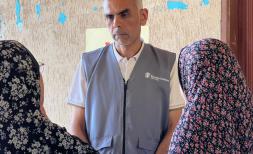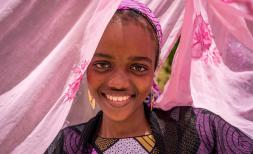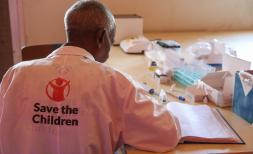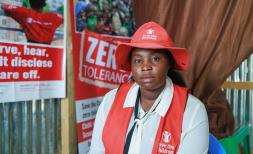Everything you should know about refugees and internally displaced people
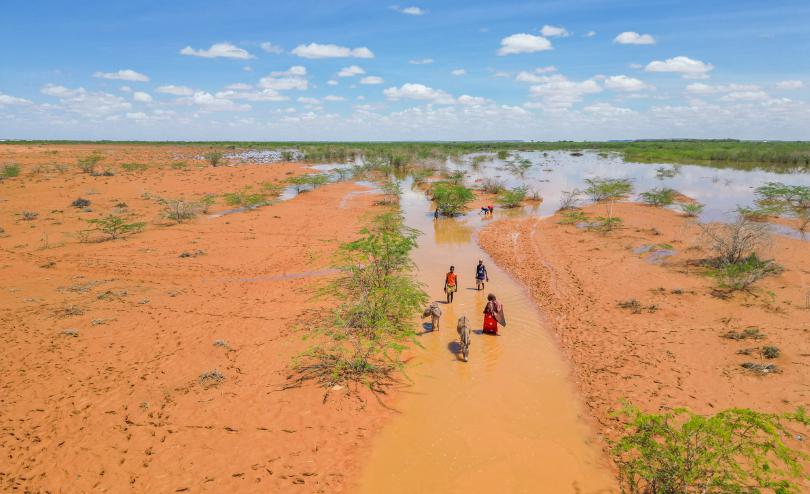
Aerial photos for the damage caused by the floods that hit Southern Somalia on May 2023. Awale Koronto/ Save the Children
More than 1 in 73 people worldwide have been forced to flee their homes. This number has almost doubled in the past ten years.
{cta | By giving to Save the Children today, you can help <span class="text-primary">protect a child’s life and future</span>. | https://donate.savethechildren.org/en/donate/what-would-you-save/ | Donate now
Who are refugees and internally displaced peoples (IDPs)?
Both refugees and internally displaced peoples (IDPs) are persons seeking a safe haven after being forced to flee for reasons such as:
- Persecution based on race, religion, nationality, membership of a particular social group or political opinion
- War and conflict
- Ethnic or political violence
- Climate change and natural disasters
The difference between them is simple:
- Refugees cross an international border
- IDPs do not cross an international border and are forced to flee their homes and move within their own country.
How many refugees and IDPs are there?
Violent conflict, extreme climate events, deadly diseases and global economic shocks are devastating children’s lives and threatening their futures.
As a result, we are witnessing the highest levels of displacement on record with 36.4 million refugees and 71.1 million people displaced in their own countries.
What countries do most refugees come from?
Over half of all refugees come from 3 countries: Ukraine, Syria and Afghanistan.
AFGHANISTAN
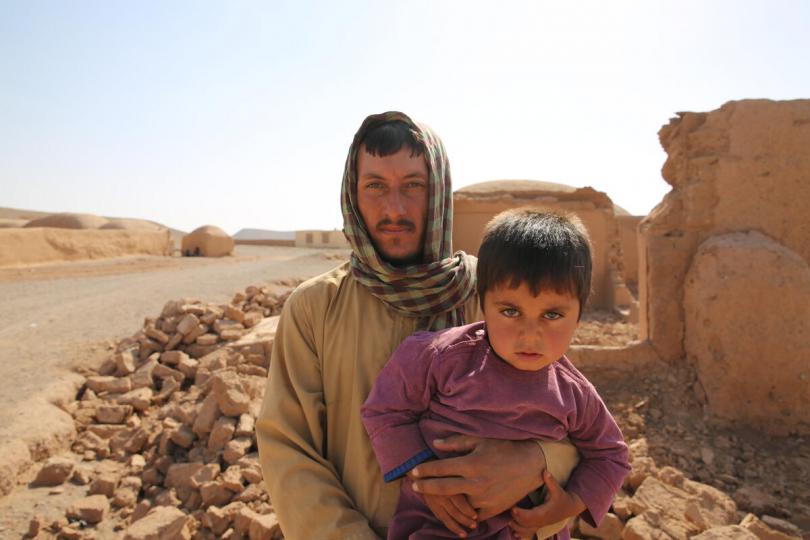
Edris* (30) and his son Jawid* (4) in front of their house which was turned into rubble by the earthquake in Herat in October 2023. Atabek Khadim / Save the Children
Save the Children has been working in Afghanistan since 1976, but the scale and severity of the current crisis is like nothing we have ever seen before. A perfect storm of climate disasters, a severe economic crisis and the collapse of essential services have led to one of the worst food crises ever recorded - almost 30 million people need humanitarian assistance.
Families are increasingly taking desperate measures to survive, including sending their children out of the country to work and even exchanging their children to clear debts. As a result, children’s access to fundamental rights like healthcare, protection, and safe and quality education has been drastically diminished:
- 5.8 million people are internally displaced
- 1 in 4 children have moved from home since August 2021, with 1 in 10 migrating for work, unaccompanied by an adult.
Learn more about what's happening in Afghanistan
SYRIA
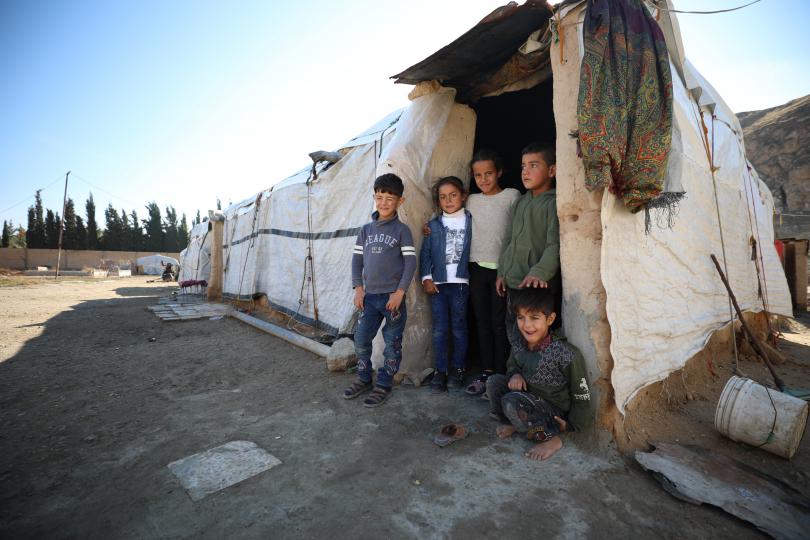
Abbas* (9), Nagham* (5), Arij* (8), Ramez* (10), Basem* (8) in front of their tent in Syria. Roni Ahmed/Save the Children.
The 13-year-long conflict has devastated the lives of a generation of young people in Syria. The earthquake in February 2023 and the latest escalation in violence have only compounded families and children's needs. As a result:
- More than half of the population has been forced to flee their homes.
- There are 6.8 million IDPs and 5.5 million refugees in the region.
Learn more about what's happening in Syria
UKRAINE
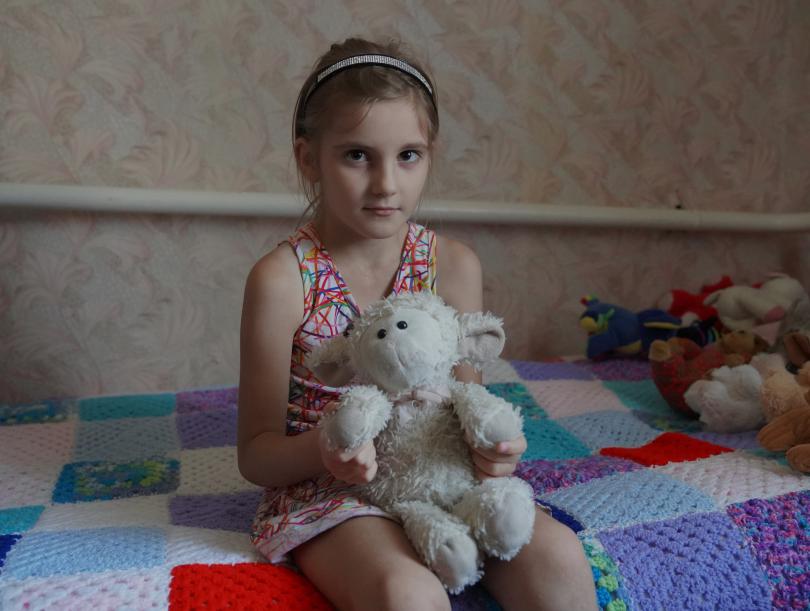
Bebe, Liya's* favourite toy she took with her when fleeing her home in Ukraine. Anastasiia Zakhoskina/Save the Children
In the past two years, millions of people have fled to safety, with over 15 million people fleeing their homes in what was the fastest-growing displacement crisis in Europe since World War II.
Children have seen their homes, playgrounds and schools bombed. They’ve lost loved ones to the violence, or been separated from family members while being forced to flee. They’ve been cut off from healthcare and school.
As the war enters its third year:
- 4 million people are internally displaced and 6.3 million have fled across borders.
- 2.9 million children in Ukraine need support to overcome the horrifying impacts of this war.
Learn more about what's happening in Ukraine
How does displacement affect children?
Children make up less than one-third of the global population but around 40% of the world's forcibly displaced population.
Some children become separated from their families or guardians along the way, leaving them extremely vulnerable to abuse, trafficking and exploitation.
Refugee children also miss our on an average of 3 to 4 years of school due to forced displacement.
What is Save the Children doing to help?
Save the Children has over 100 years of experience responding to emergencies, such as earthquakes, droughts and conflicts, and the resulting crises that unfold, like hunger, displacement and disease.
When families have to flee their homes, they might pack their clothes, their phone, or their favourite toy. But they can’t pack security, a stable income, a safe place to play or learn, or someone to fight for their rights.
That is what Save the Children is there for. We support displaced families by:
- Providing protection and support services at borders.
- Creating learning opportunities, play centres and emotional support services through our Child Friendly Spaces in refugee camps.
- Identifying and registering children who have been separated from their families and working to reunite them with loved ones.
